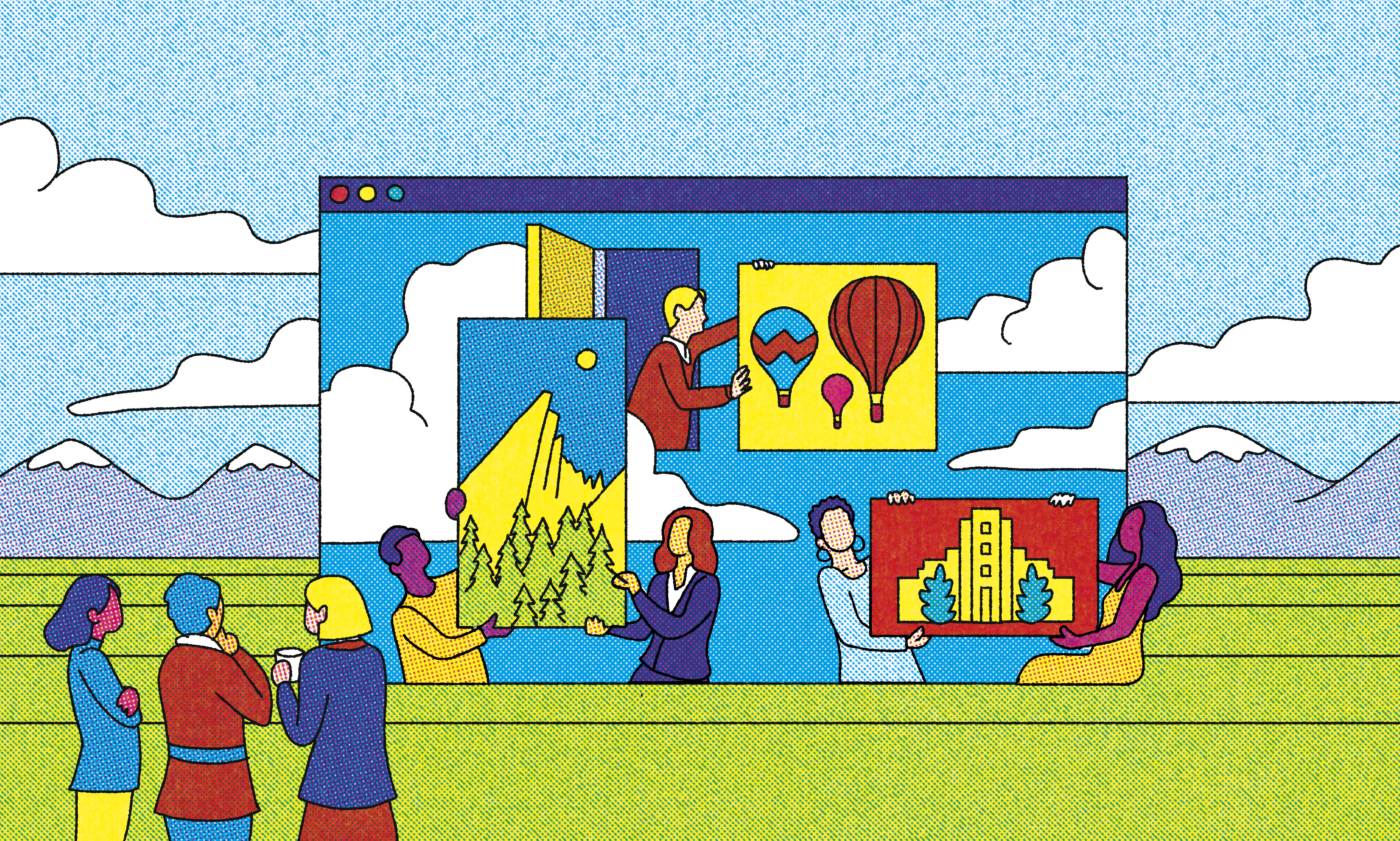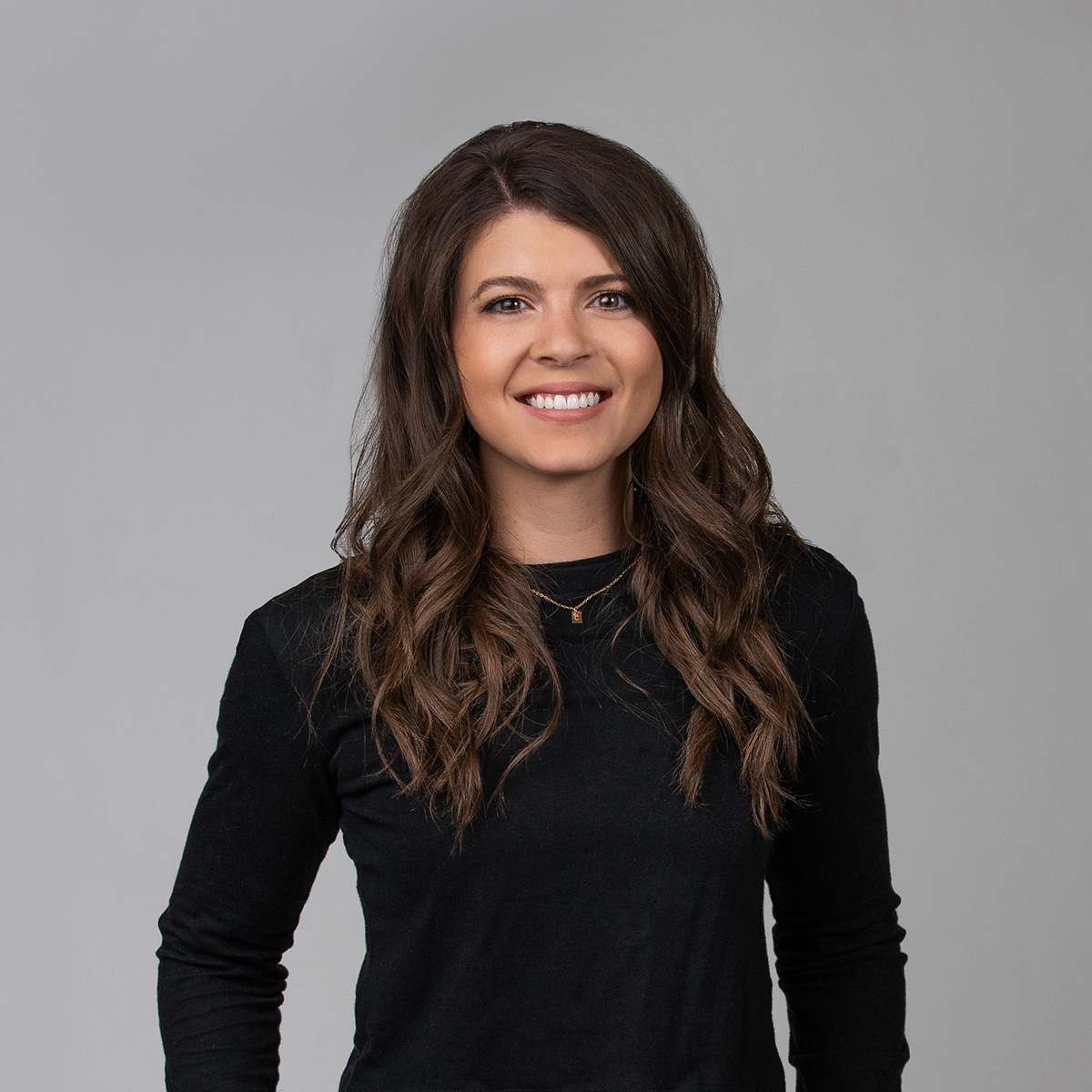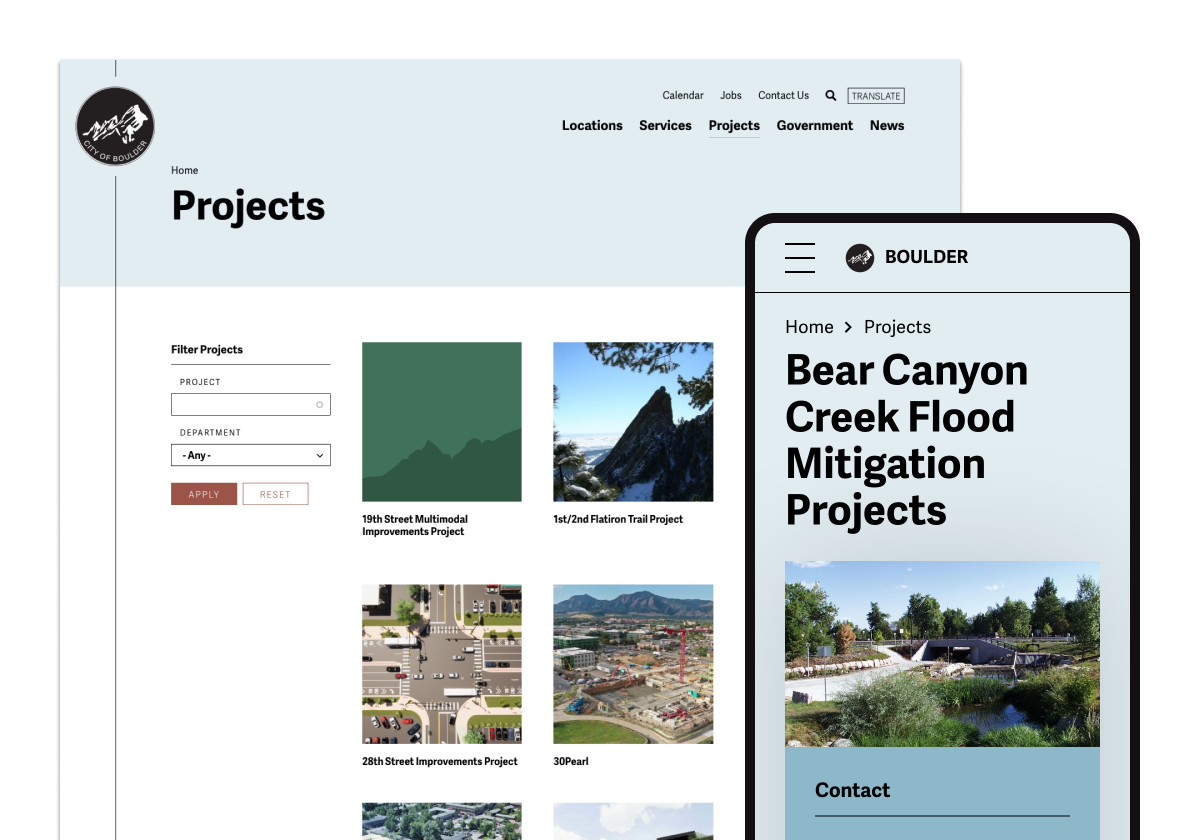
Clarity. Harmony. Alignment.
While these factors are nice to have for any client/digital agency relationship, they’re must haves when it comes to effective website design. If an agency isn’t utterly aligned with its client’s goals, needs, aesthetic preferences, and more, the design can take a hard left in a heartbeat.
That’s why our team at Aten Design Group regularly employs in-person (or virtual) design strategy workshops to develop clarity, harmony, and alignment. Going into a website design project, we immerse ourselves in stakeholders’ needs, wants, and processes. That’s how we zero in on goals, develop alignment, and create clarity around deliverables. Our goal is to become an integral team member and an extension of the client’s brand as opposed to an agency that merely consults.
The City of Boulder’s site redesign project that I managed serves as a prime example of our workshops in action. A full day of in-person exercises helped us not only hone in on the municipality’s intended user journey but also clarify the needs and preferences of the nearly 30 departments that interact with site content.
High-Altitude Ambitions
An iconic Colorado destination, the City of Boulder provides governance, utility services, local news, recreation/trail information, and more. Its website attracts a wide range of users, including city employees, residents, visitors, prospective residents, community members engaged with local government, etc. Not surprisingly, members from each group come to the site with unique tasks they hope to complete.
However, city leaders concluded that the existing website wasn’t effectively meeting the needs of these various user groups. Their core website design goal was to make the site exceptionally simple for users to find and access content. Plus, they hoped to break from the site’s department-based organizational structure and instead focus on user tasks to guide the experience.
With a variety of information and users, nearly 30 departments within the City of Boulder regularly interact with the website. While some stakeholders just view content, others edit the site, so the previous site was a Frankensteined combination of stakeholders’ content needs and aesthetic preferences.
Aten’s design team needed to collect, summarize, and prioritize the demands of 25 to 30 key stakeholders. And along with meeting the city’s design and functionality needs for users, the agency had to put up guardrails and permissions that would allow the organization’s roughly 165 back-end website editors to effectively perform their roles while also staying within their lanes.
Workshop Exercises: A Clear Path to the Launch
With a laundry list of deliverables in hand in late 2019, our design team regularly met with roughly five City of Boulder stakeholders to hash out basic functionality and organizational parameters. The project teams then arranged for a full-day design strategy workshop to get all stakeholders on the same page.
Prior to the one-day workshop, we worked with City of Boulder leaders to align schedules so that the city’s 25 to 30 personnel could all have their place at the table. Having everyone in the same room at the same time allowed every participant to feel heard during the discussion. Plus, it gave us a full-picture perspective that was invaluable to the design process.
This But Not That: Voice and Tone
The workshop comprised three exercises that each lasted roughly two to four hours. The first exercise, aptly named “This But Not That,” helped to establish a voice and tone for the website by asking participants to identify adjectives that represent the brand and to find slightly different adjectives that were contrary to brand tenets.
Aten repeatedly posed the question: Boulder is (blank) but not (blank). Participants could offer their own adjectives and/or choose from Aten’s suggestions.
For example, participants might have said the city was bold but not loud, charismatic but not energetic, etc. In the end, the group hammered out a list of five adjectives that describe the personality of the organization, which designers could then employ to develop the tone and voice of the website: Environmental, welcoming, fun, innovative, and helpful.
Comparative Analysis: Look and Feel
Next, we presented stakeholders with a host of other websites whose missions seemed to run adjacent to that of the City of Boulder. While the sites were certainly sources of inspiration, they also allowed the team to talk critically and concretely about the city’s preferences related to typography, color, layout, white space, visuals, imagery, video, etc.
For instance, the team showed participants five sites with different layout treatments, five more with different typography styles, etc. The group then discussed the pros and cons of each option.
This exercise was instrumental in determining where clients wanted to go regarding multiple design elements. While the group discussed the various websites, we were listening for key words, phrases, and overlapping ideas that would then help us move the design to the next phase.
Create, Read, Update, Delete (CRUD): Permissions and Guardrails
The day wrapped up following a discussion about CRUD-related permissions for the 165 site content editors in the organization.
We walked participants through an Excel draft representing permissions granted to not only each department but also to each role within the departments. We went through every line item from who could log into the website on the back end to view something to who had the power to delete the site entirely.
This short exercise allowed Aten to put up valuable guardrails at the onset, which eliminated permission-related issues down the road.
A Successful Launch
Following the workshop, Aten held a handful of additional working sessions with four or five city reps to hammer out critical details.
Designers then dug into the project with the confidence that the City of Boulder’s stakeholders were aligned on their expectations—and the agency and the municipality shared the same clarity as well.
The end result was a stunning digital experience that reorganized the city’s many services and how-to information into a task-oriented and user-centered design.
On the back end, Aten devised a granular permissions system that allows for flexible and ongoing configurations, which provide access where needed while also ensuring brand guidelines are maintained.
Of equal importance was the City of Boulder’s level of satisfaction. The city stakeholders were on board with the one-day workshop, as almost all of them actively and eagerly participated in the entire experience. As a result, we all aligned on the direction of the site, which then led to the successful execution of the city’s goals.
As a further testament to this success, as of now, about two years after the launch of the site, Aten continues to work with the municipality. Due to the foundation we built during our workshop our relationship continues today.
Read more about Aten’s award-winning work with the City of Boulder, or visit the City of Boulder website.



